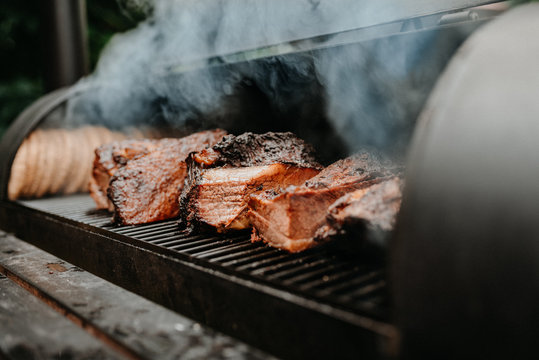The art of BBQ and meat smoking, deeply rooted in tradition, has evolved over centuries, becoming an integral part of culinary heritage and traditions. The essence of sweet, peppery BBQ smoke is more than a sensory delight; it invokes memories, traditions, and the camaraderie of cooking, whether for tailgates, family gatherings, or friendly get-togethers.
Originating from the practice of smoking leftover meat in the ground with hot coals at meat markets, BBQ and meat smoking methods have undergone transformative changes while retaining and expanding their intrinsic value. This culinary tradition, particularly prominent in Texas, has not only created a rich cultural tapestry but also supports numerous farmers, ranchers, businesses, and timber and lumber operations throughout the state.
At the heart of the meat smoking process lies a crucial element—the source of the smoke, traditionally derived from hot coals underground. As smoking methods evolved, the introduction of split woods and wood chips, such as hickory and pecan woods, broadened the spectrum of flavorful meats and heightened the demand for this culinary delicacy.
A new chapter in the meat-smoking tradition has emerged with the advent of processed wood pellets.
Shane Harrington, Senior Project Manager at Texas A&M Forest Service and owner of a Texas BBQ catering business, notes, “The introduction of wood pellets into the BBQ market has allowed greater access to even the most novice smokers.” The world of BBQ has experienced exponential growth in the last decade, thanks to enhanced access to woods and the creation of wood pellets and pellet smokers.
Smoking pellets, often a byproduct of lumber production, offer sustainable solutions for forest management by ensuring comprehensive utilization of every part of a tree in the secondary stages of production.
Harrington emphasizes, “The evolution of and higher demand for BBQ smoking products means that lumber producers have a new avenue for wood byproduct usage that they didn’t have before.”
Wood pellets are crafted from chipped logs, branches, and excess lumber, processed into wood fiber. This fiber undergoes meticulous preparation, including a magnetic scan to eliminate any metal content. The drying process reduces moisture to a mere 6% of the original content, preserving robust, earthy flavors. The final step involves pressing the dried wood fiber in a pellet mill under intense pressure, yielding the pellets that add a new dimension to the art of meat smoking.
